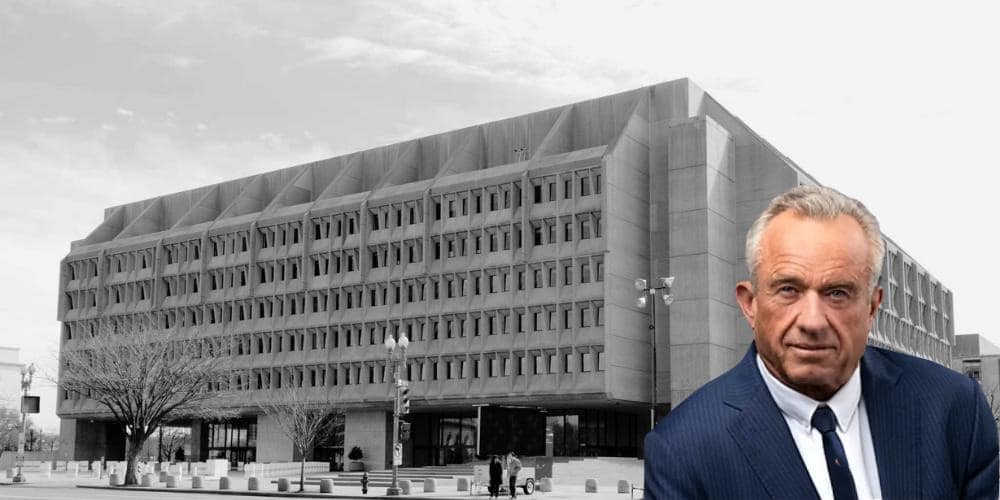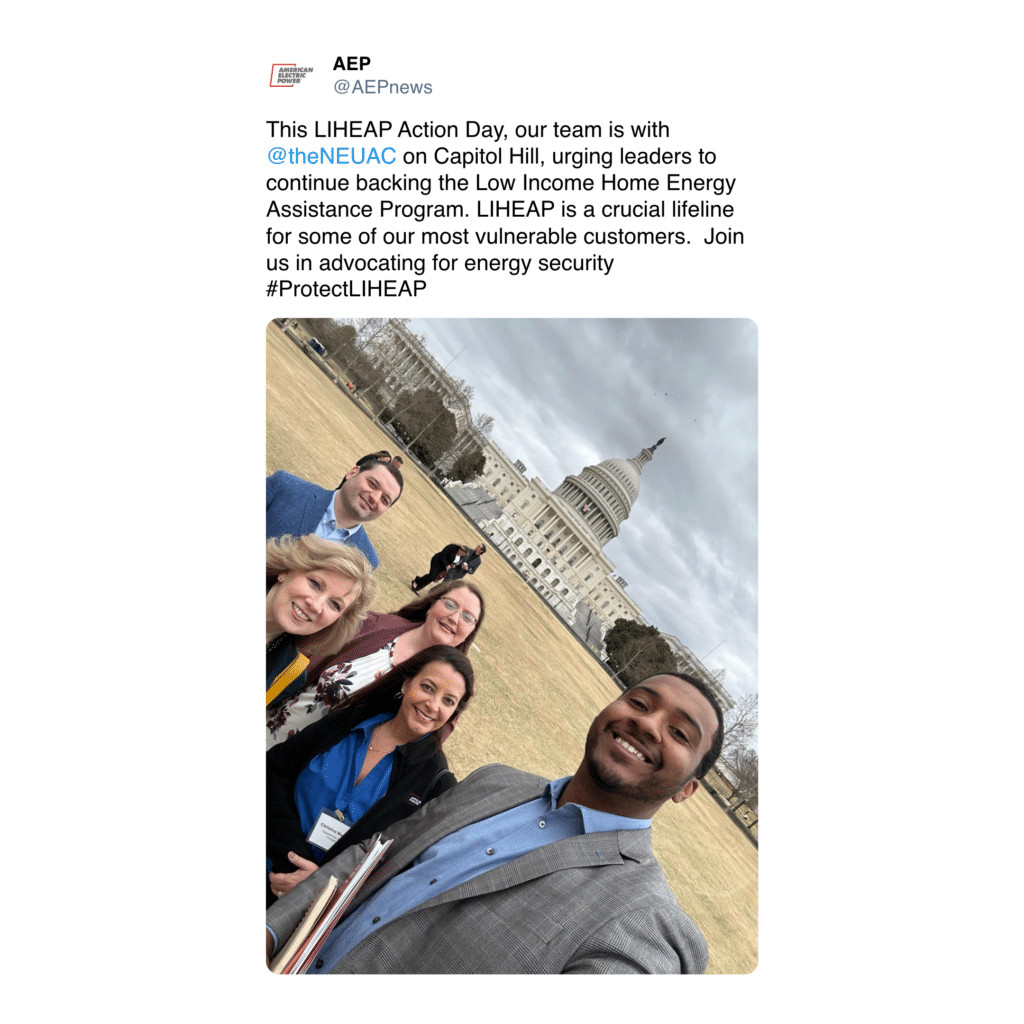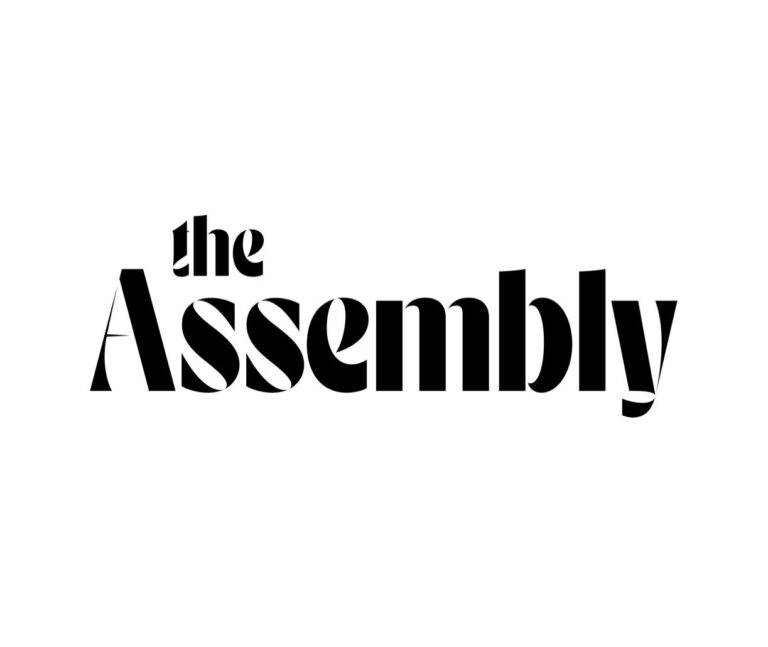Corporate utilities largely silent on Trump layoffs of staff who manage LIHEAP

Corporate utilities are largely staying silent and uncritical of the Trump Administration even as mass federal layoffs threaten the continued existence of the Low-Income Home Energy Assistance Program (LIHEAP), a program utilities rely on extensively to help millions of their customers afford heat in the winter and air conditioning in the summer.
The Trump Administration terminated the entire staff tasked with managing LIHEAP on April 1st. The program, housed within the U.S. Department of Health and Human Services (HHS), annually distributes billions of federal dollars, appropriated by Congress, to state governments to support critical assistance programs that help low-income households pay their utility bills, avoiding debt and disconnection.
Congress allocated $4.1 billion to LIHEAP for Fiscal Year 2025, and most of it has been distributed, but $378 million in unreleased funding for this year remains in jeopardy, according to a joint statement by the National Consumer Law Center (NCLC) and the National Energy Assistance Directors Association (NEADA). Without staff to run the program, that money won’t be allocated to the states, NCLC and NEADA said, jeopardizing LIHEAP operations at the local level.
The Energy and Policy Institute (EPI) contacted 46 investor-owned utilities, and the major trade associations for investor-owned gas and electric utilities, to ask whether they had any comment on the Trump Administration’s staffing cuts to LIHEAP.
11 utilities responded, largely affirming their generic support for the LIHEAP program, but they didn’t offer any concrete actions they have taken, or planned to take, to advocate to restore LIHEAP staffing with the Trump Administration. Some said they were monitoring developments, but none expressed any explicit criticism of the staffing cuts.
Florida shows how LIHEAP disruption could cause disastrous consequences for struggling customers
One state that could be affected by the stalled LIHEAP funding disbursement is Florida, where residents in Broward County are currently unable to apply for emergency utility assistance funds because the local LIHEAP provider stopped accepting LIHEAP applications. Broward County is home to almost 2 million residents.
Dwindling funds and heightened demand caused Broward County, for the second month in a row, to turn away families in need. In March, Broward County closed its application portal and advised residents to “check back with [them] again … on April 2, 2025.” Just hours after the LIHEAP portal reopened that day, it closed again, telling residents to wait yet another month for assistance.

Florida Power and Light (FPL), the monopoly utility exclusively servicing the Broward area, has yet to publicly announce adjustments to its disconnection or payment extension policies in response to the insufficient local LIHEAP program, despite doing so in the past. FPL has previously “implemented a number of special policies – including offering payment extensions and waiving fees – to help … customers through … unpredictability.”
When LIHEAP funds fell short of covering outstanding utility bills during the COVID-19 pandemic, FPL supplemented federal funds with private ones by donating $15 million in bill credits to low-income customers, funded solely by shareholder contributions.
FPL did not respond to a request for comment from EPI about whether it had advocated or would advocate with the Administration with regard to the LIHEAP staffing cuts.
Without additional energy assistance funds or revised utility policies, any disruption to LIHEAP funds would expose some of Florida’s most vulnerable customers to dangerous extreme heat in an attempt to reduce cooling costs, a common phenomenon detailed in a recent study about how escalating utility bills and dangerously hot homes exacerbate health and well-being risks for vulnerable households. While Florida legislators filed a bill to ban utilities from performing disconnections for non-payment during periods of extreme heat, it’s unlikely that it will make its way to Governor DeSantis’ desk. FPL registered to lobby against the bill.
Millions of American families live in states like Florida where an absence of consumer protections and frequent rate increases jeopardize their health and safety. If understaffing in the U.S. HSS is prolonged, any impairment to LIHEAP operations could force millions of Americans to forgo essentials or acquire stifling debt to afford electricity.
Utilities have been strong, longtime supporters of LIHEAP, which helps their customers and their cash flow
Most utilities have been strongly supportive of the LIHEAP program in the past. Many of the country’s largest utilities have signed onto the National Energy and Utility Affordability Coalition’s (NEAUC) Letter urging Congress “to fully support LIHEAP and maximize funding in FY 2026”.
While private about other elements of their political agenda, utilities haven’t been shy about publicly lending their support to LIHEAP. Many even regularly participate in NEAUC’s LIHEAP Action Day, where utility representatives join consumer advocates to lobby members of Congress to preserve and expand the budget of LIHEAP, a program American Electric Power referred to as a “crucial lifeline for some of [its] most vulnerable customers.”.

The utilities rely on LIHEAP not only to help their customers afford to maintain service, but also to avoid the accrual of bad debt on their balance sheets as customers fall behind on their bills. Regulators typically allow utilities to recover those unpaid debts from other ratepayers, but avoiding the bad debt entirely is better for their business, especially when it’s paid by federal assistance. Some utilities have even disclosed threats to the LIHEAP program as risk factors for their business, as they could interrupt cash flows from customers.
WEC Energy, which owns utilities in Wisconsin and Illinois, noted in its most recent annual statement that “elimination or reduced financial support of programs that provide energy assistance to our customers, including the Low Income Home Energy Assistance Program, could impact the demand for energy and/or adversely impact our liquidity.”
Duke Energy has called LIHEAP a “critical part of [its] customer assistance model.” In 2024, more than 114,000 eligible North Carolina households received nearly $90 million in utility bill assistance through LIHEAP and utility-ran assistance programs. For Duke, LIHEAP is “an important priority for many [of the] vulnerable customers” it serves.
Duke did not respond to a request for comment from EPI about whether it had advocated or would advocate with the Administration with regard to the LIHEAP staffing cuts.
Despite widespread utility support for LIHEAP, consumer advocates are left on their own to denounce staffing cuts and program impairment
Consumer advocates, elected officials, and advocacy organizations have publicly criticized the extensive firings and called on the HHS U.S. Secretary and Trump Administration to guarantee the preservation of LIHEAP. In a letter published earlier today, Congressman Chris Pappas (NH-01) and 89 of his colleagues called on the Secretary to protect LIHEAP and rehire the HHS staff who manage the LIHEAP program that were fired this week.
But no investor-owned utility in the U.S. has publicly disapproved of the Trump’s Administrations mass firings or encouraged the Administration to reverse the staffing cuts, and none did so in response to EPI.
Of the 11 utilities that responded to EPI’s request for comment, only a few obliquely signaled that they might engage with the Administration around the staffing cuts. Xcel and Consumers Energy came closest to saying they would engage.
When asked if Xcel will advocate for the restoration of HHS’s staffing such that the continued delivery of LIHEAP funding is not compromised, Xcel said, “we will continue to enroll customers in our affordability programs and will work closely with state and federal agencies to ensure our customers receive all the energy assistance they need.”
Consumers Energy offered a similar but less descriptive statement, saying, “Consumers Energy will continue to advocate for the continuation and full funding of this program.”
Xcel and Consumers Energy are both members of the Edison Electric Institute (EEI), the trade association for investor-owned utilities. EEI responded to EPI’s questions with the following statement that did not address the staffing cuts:
“EEI’s member electric companies are focused on keeping customer bills as low as possible and have a long track record of supporting customers facing financial hardships. In addition to payment plans, EEI members help customers in need receive financial assistance and connect with state and federal resources, including LIHEAP. LIHEAP provides a vital source of aid to millions of American families, and we strongly support this program. Not only do we work closely with NEUAC and other groups to advocate that federal funding for LIHEAP be maximized, electric companies also are working at the state level to streamline the process for connecting eligible customers to LIHEAP resources in their communities.”
When asked in a follow-up inquiry if EEI specifically would engage in any way with the Trump Administration’s cuts to LIHEAP staffing at HHS, beyond its general support for LIHEAP, EEI did not respond.
In other situations, EEI has not been shy about engaging more specifically on policy matters, including criticism of presidential administrations.
EEI lobbied Congress to oppose a nationwide ban on shut-offs and debt collection during the COVID-19 pandemic, and sued the Biden Administration over its proposed rule to require greenhouse gas pollution reductions from the power sector, calling its lawsuit “necessary to protect customers.”
The American Gas Association, the trade association for investor-owned gas utilities, which has also supported LIHEAP funding, did not respond to EPI’s request for comment.
Kennedy acknowledges potential “mistakes” without reference to LIHEAP
Robert F. Kennedy, Jr., the secretary of HHS, acknowledged on April 3rd that “mistakes” were made in the wholesale cuts to HHS staff.
“In the course of that, there were a number of instances where studies that should have not have been cut were cut, and we’ve reinstated them. Personnel that should not have been cut were cut — we’re reinstating them, and that was always the plan,” Kennedy said, according to reports from ABC News and other outlets.
Kennedy’s comments came in response to a question about a Centers for Disease Control program that monitors lead exposure among children. He did not specifically reference the LIHEAP program in his comments about mistakes.
Senators Bill Cassidy and Bernie Sanders, Chairman and Ranking Member of the Senate Health, Education, Labor and Pensions (HELP) Committee invited Kennedy to testify regarding the overall staff layoffs. NCLC and NEADA have called on the members of the Committee to insist that the legal requirements to provide LIHEAP are met and to critically examine all of the other pending staffing cuts to ensure that everyday Americans are not put at risk. The HELP Committee hearing is slated for Thursday, April 10.
Responses from utilities and trade associations
The following utilities responded to EPI’s inquiries about any efforts they would make to advocate for the LIHEAP program and to engage with the Administration around the staffing cuts.
American Electric Power
“AEP believes that LIHEAP is an important resource for many of our customers. Last year, we worked with community action agencies and our customers to process nearly 380,000 LIHEAP transactions. Each one of those helped a customer keep their electric service connected. We will continue working closely with the agencies administering LIHEAP programs in our states to understand processing impacts and assist where we are able. AEP recently met with members of Congress to stress the importance of LIHEAP for our customers and we will continue to share the vital role that the program plays in helping customers in need.”
Consumers Energy
“LIHEAP funding plays a crucial role in helping income-constrained families afford energy costs and ultimately has proven to be a lifeline that lifts at-risk families out of poverty. The program helps provide critical assistance to nearly 6 million of the nation’s most vulnerable customers, including over 400,000 Michiganders. Consumers Energy will continue to advocate for the continuation and full funding of this program.”
DTE
“As we continue to invest to improve electric reliability and generate cleaner energy, we’re also committed to keeping bills as low as possible. Late last year, DTE served alongside the Coalition to Keep Michigan Warm as a strong advocate for the successful increase in state funding for energy assistance that will open the doors of support to additional Michiganders in need. Along with this work, we’ll continue to champion the preservation and expansion of LIHEAP and other state and federal energy assistance programs that support our most vulnerable customers.”
Edison Electric Institute
“EEI’s member electric companies are focused on keeping customer bills as low as possible and have a long track record of supporting customers facing financial hardships. In addition to payment plans, EEI members help customers in need receive financial assistance and connect with state and federal resources, including LIHEAP. LIHEAP provides a vital source of aid to millions of American families, and we strongly support this program. Not only do we work closely with NEUAC and other groups to advocate that federal funding for LIHEAP be maximized, electric companies also are working at the state level to streamline the process for connecting eligible customers to LIHEAP resources in their communities.”
Evergy
“I am going to refer you to EEI, which can speak from an industry perspective.”
Puget Sound
“We understand the federal program for assistance, LIHEAP, is impacted by the recently announced staffing reductions. At this point, we don’t have any additional information on how that will impact customers.
Our message to customers is to reach out to us if they need help paying their bill.
PSE’s assistance programs (HELP and bill discount rate) are funded through PSE rates and are not impacted. They are the first step in applying for aid so we want customers to continue to reach out if they need support. They can learn more and get started on the process at pse.com/assistance.
In addition to the programs mentioned above, PSE also has payment arrangement programs and offers assistance through the Warm Home Fund administered through the Salvation Army.”
Spire
“We are currently analyzing this information and have no further comment at this time.”
UGI Utilities
UGI Utilities offered a statement to EPI affirming the importance of LIHEAP to its customers and saying that it was monitoring developments. Later, but before this article was published, UGI asked to recall that statement, instead saying the following:
“We are now learning from the PA Department of Human Services that there is no impact on the current LIHEAP season.”
The LIHEAP season ends on April 18 in Pennsylvania.
Unitil
“I can confirm that we’ve been in touch with the CAP agencies we work with in all states we serve and they have confirmed both that they are presently funded and that they do not foresee direct issues in providing assistance to customers this season relative to what has been reported in the media. We recognize this is a fluid situation and we will continue to monitor reports. Certainly, LIHEAP provides meaningful support for our customers.”
Versant
“Versant Power has strong working relationships with Maine Housing and our local Community Action Programs which connect low-income customers with assistance, including the Home Energy Assistance Program. With the announcement of staffing cuts, we are working to understand how those agencies and our customers may be affected in the short and long term. With about 11.5 percent of our customers living below the poverty rate, we know that assistance with energy costs is vital in northern and eastern Maine.
Versant Power also has been involved in conversations with state officials and members of Maine’s congressional delegation about potential impacts of Canadian tariffs, particularly in northern Maine, which is not directly interconnected to the rest of Maine and the United States.”
Xcel
“We know our customers depend on energy service and we always work with them to avoid disconnection. We, along with our industry, are closely monitoring these developments. At this point, we have not experienced any gap in payments. We will continue to enroll customers in our affordability programs and will work closely with state and federal agencies to ensure our customers receive all the energy assistance they need.”
The following utilities and trade associations did not respond to EPI’s request for comment:
- American Gas Association
- AltaGas
- Ameren
- American Public Gas Association
- Arizona Public Service
- Atmos
- Avangrid
- CenterPoint Energy
- Central Maine Power
- ConEd
- CPS Energy
- Dominion Energy
- Duke Energy
- Entergy
- Eversource
- Exelon
- Florida Power & Light
- Minnesota Power/Allete
- National Grid
- NiSource
- NJ Resources
- National Propane Gas Association
- NV Energy
- NW Natural
- PacifiCorp
- PG&E
- Portland General Electric Company
- PPL Electric
- PSEG
- SoCal Edison
- Southern Company
- Southwest Gas
- SRP
- WEC



